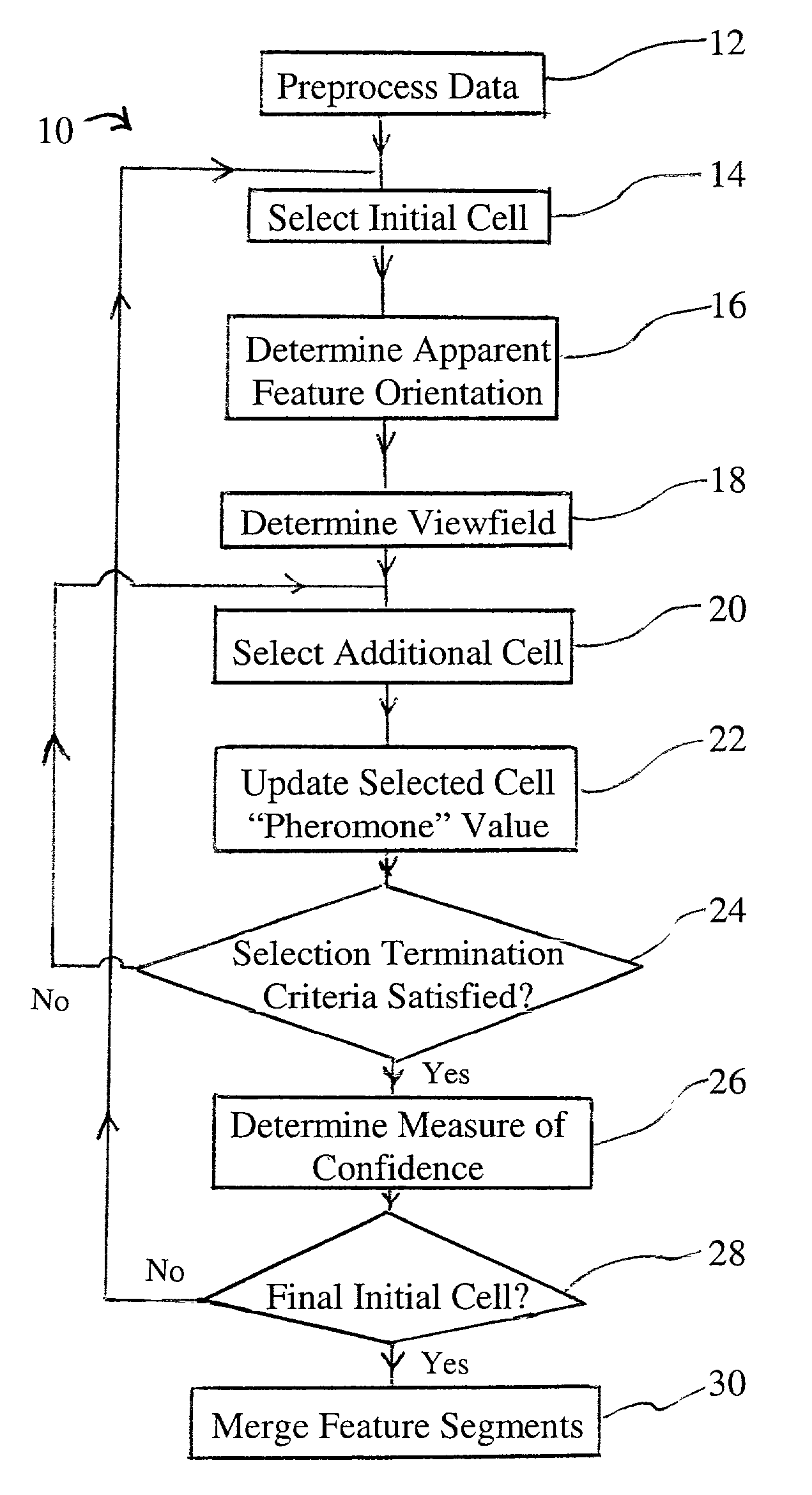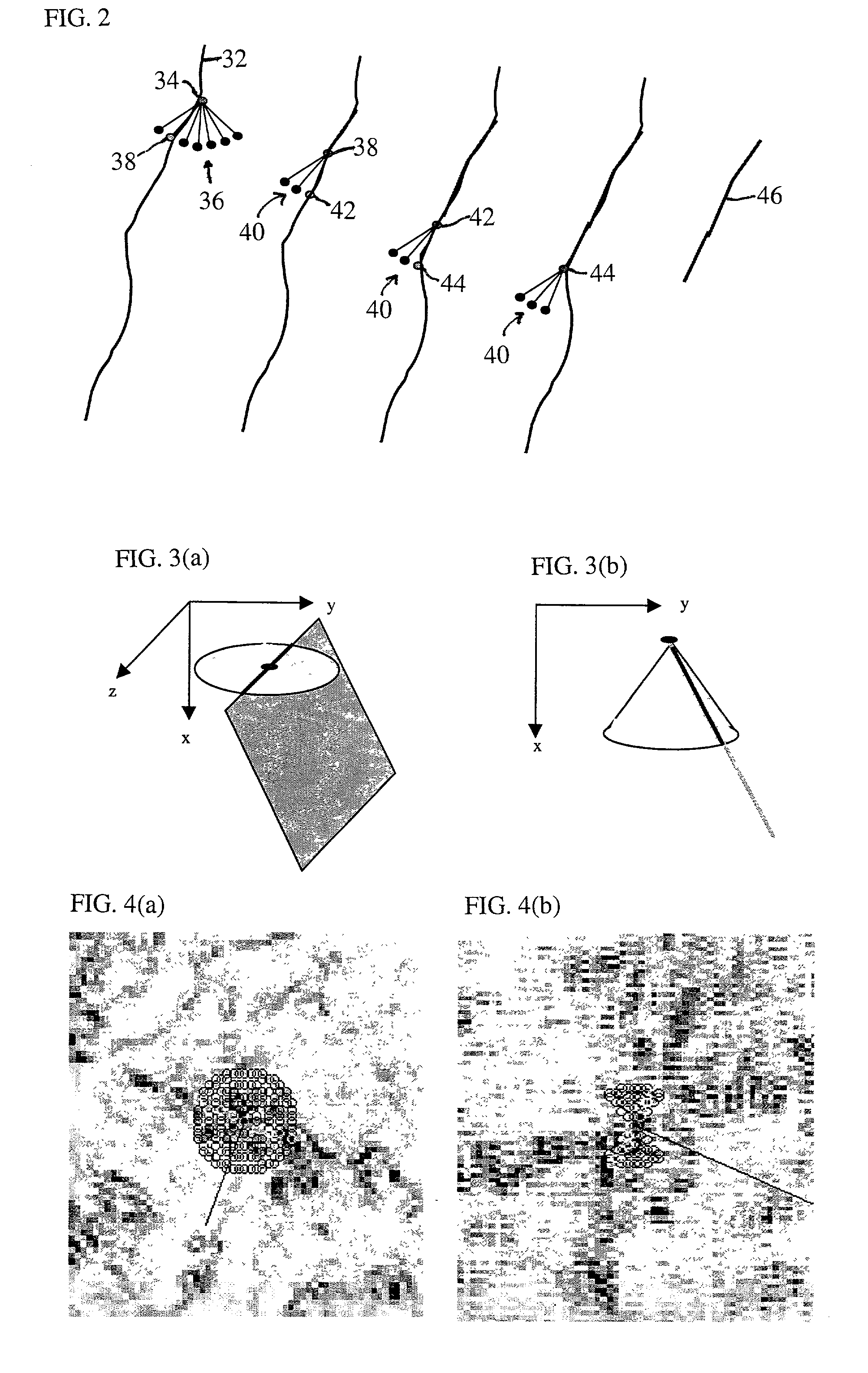Image feature extraction
a technology of image feature and extraction algorithm, applied in the field of image feature extraction, can solve the problems of high data noise, inability to mask desired details, and inability to accept unacceptable errors and mask data,
- Summary
- Abstract
- Description
- Claims
- Application Information
AI Technical Summary
Benefits of technology
Problems solved by technology
Method used
Image
Examples
Embodiment Construction
[0029]A general methodology is presented below for extracting lines in 2D and surfaces in 3D under the conditions stated above. This approach was originally developed to extract fault surfaces from attributes derived from 3D seismic data, and has done so with great success. This embodiment of the method will be used to concretise the generalized methodology described immediately below. Other applications where the method may also be utilized are described.
[0030]Overall Approach
[0031]In this section of the application, the overall approach of the methodology is presented. The foundation of the methodology is “swarm intelligence” that will be briefly introduced in the next section.
[0032]Swarm Intelligence
[0033]A colony of ants is often referred to as a “super organism”. This term reflects the very successful organization of thousands of individual ants that make them perform the tasks needed for colony development. But how does the colony organize its ants into performing tasks like f...
PUM
 Login to View More
Login to View More Abstract
Description
Claims
Application Information
 Login to View More
Login to View More - R&D
- Intellectual Property
- Life Sciences
- Materials
- Tech Scout
- Unparalleled Data Quality
- Higher Quality Content
- 60% Fewer Hallucinations
Browse by: Latest US Patents, China's latest patents, Technical Efficacy Thesaurus, Application Domain, Technology Topic, Popular Technical Reports.
© 2025 PatSnap. All rights reserved.Legal|Privacy policy|Modern Slavery Act Transparency Statement|Sitemap|About US| Contact US: help@patsnap.com



